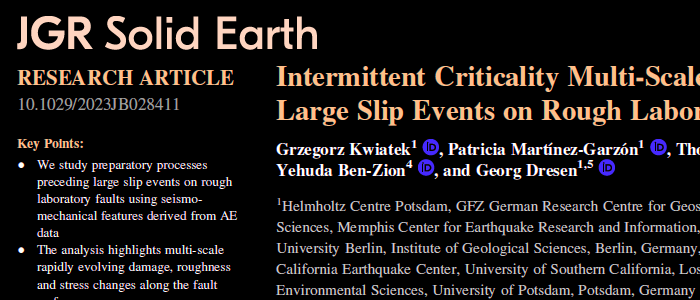This paper had a special place in my heart…. and in my workplace, where it had an ironic codename “A neverending paper”. The story of this paper starts already in 2016. Finally, our study entitled “Intermittent criticality multi-scale preparatory processes leading to large slip events on rough laboratory faults has been published in JGR – Solid Earth. In the study We investigate preparatory processes preceding large slip events on rough laboratory faults using a unique pool of seismo-mechanical spatio-temporal and physics-informed features derived from acoustic emission data. Our analysis highlights multi‐scale and rapidly evolving fault damage, roughness and stress changes evolution along the complex fault surface. The observations are neatly wrapped with the Intermittent Criticality concept that sheds a light on whether we are capable (at all!) to predict large slips – runaway earthquakes.
Key points highlighted in the paper:
- We study preparatory processes preceding large slip events on rough laboratory faults using seismomechanical
features derived from AE data - The analysis highlights multi‐scale rapidly evolving damage, roughness and stress changes along the fault
surface - Intermittent criticality marked by evolving stress correlations on different length scales can explain the
observed patterns leading to large labquakes
Reference:
